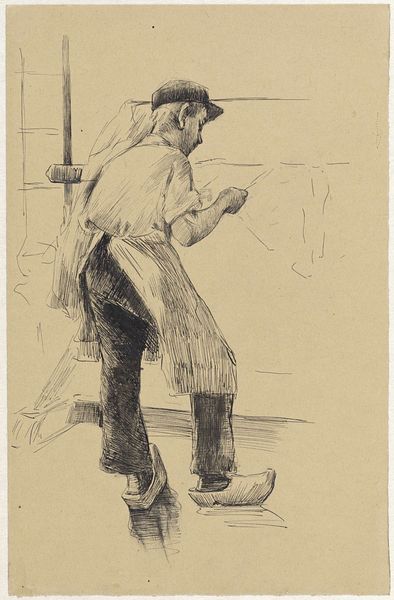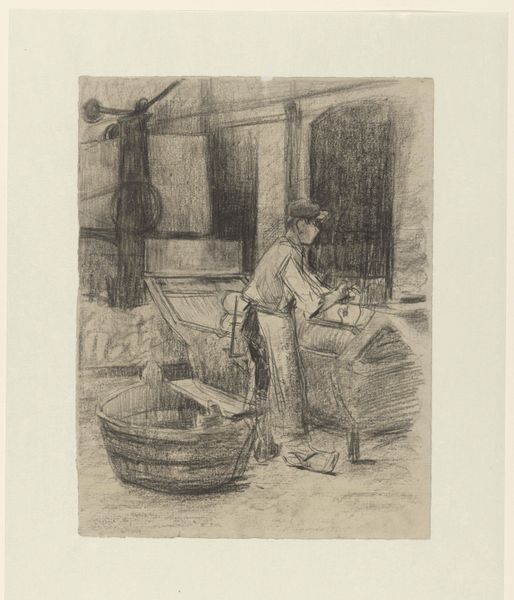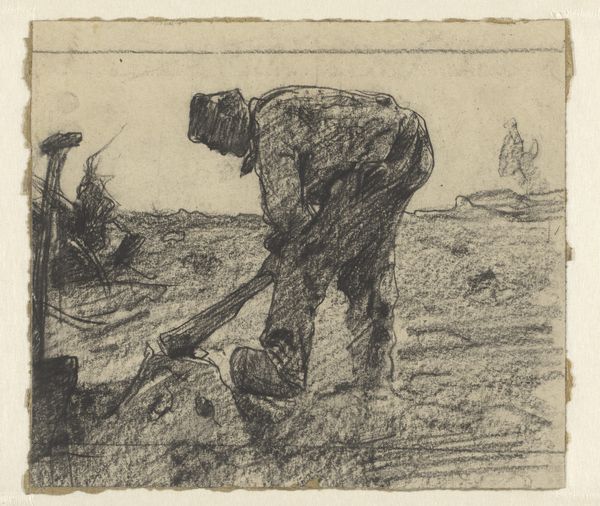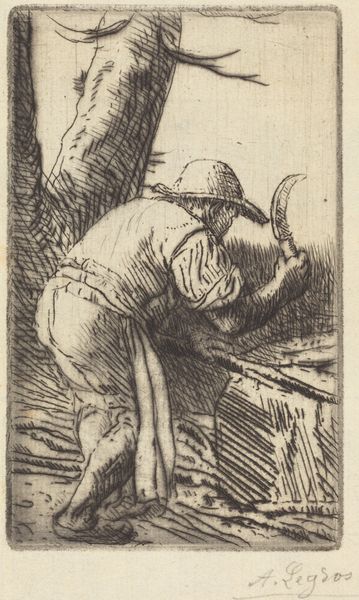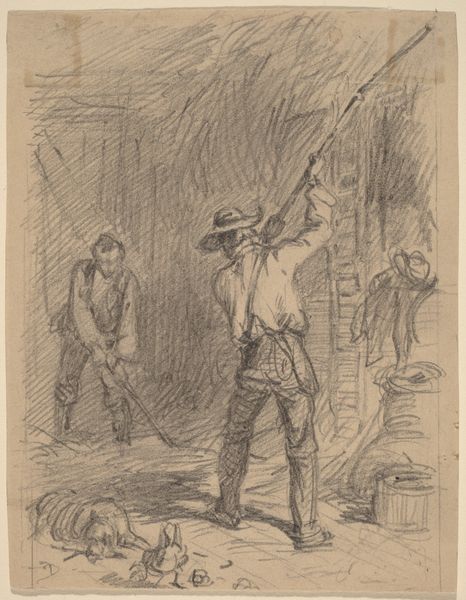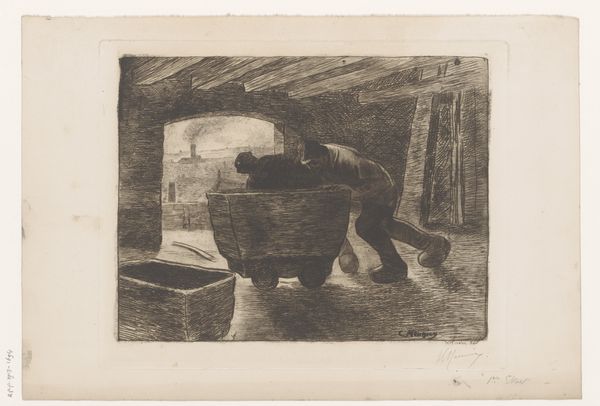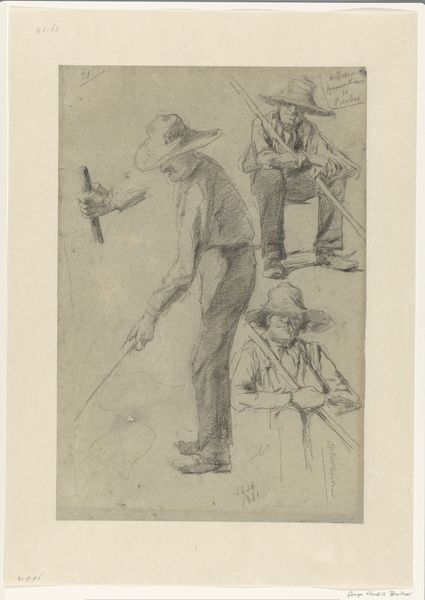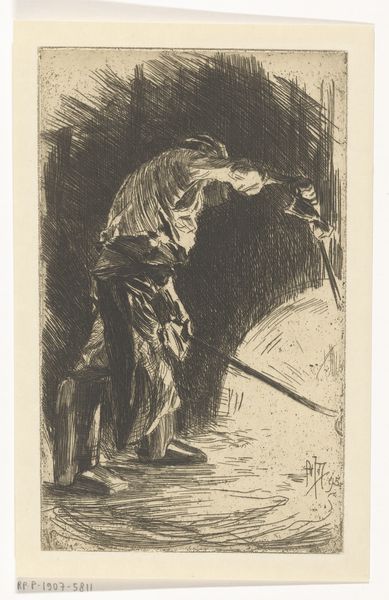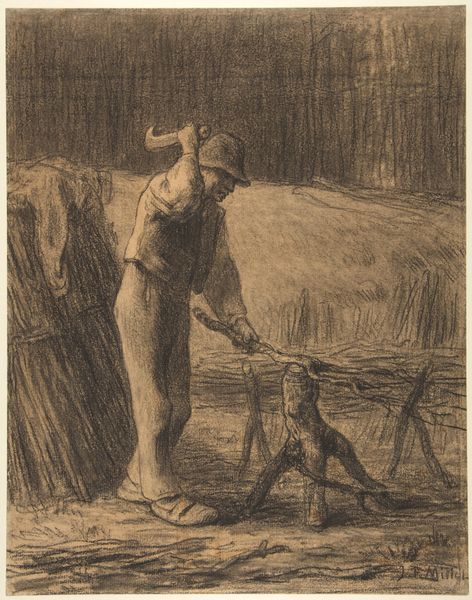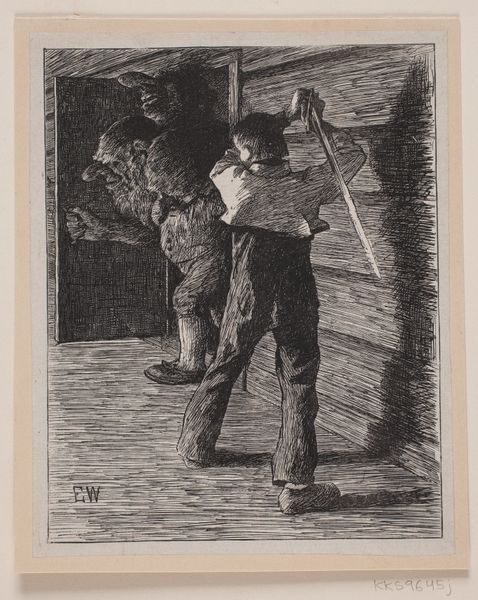
drawing, pencil
#
drawing
#
pencil sketch
#
landscape
#
figuration
#
pencil
#
sketchbook drawing
#
genre-painting
#
realism
Dimensions: height 458 mm, width 294 mm
Copyright: Rijks Museum: Open Domain
Curator: This drawing is called "Arbeider die een kruiwagen omkeert," or "Worker Tipping a Wheelbarrow," attributed to Pieter de Josselin de Jong, sometime between 1871 and 1906. It’s done with pencil on paper and currently resides in the Rijksmuseum collection. Editor: It's immediately striking – so raw and full of movement. The composition centers on a powerful figure caught in action. The stark contrasts of light and shadow heighten the sense of weight and exertion. Curator: Yes, the portrayal of labor, especially in the late 19th and early 20th centuries, speaks to the rise of industrialization and the changing roles of the working class. Wheelbarrows are, of course, incredibly symbolic. The implement of progress, the humble conveyance… What else does this piece communicate to you? Editor: Well, focusing on the intrinsic elements, look at the varied line weights! There's this incredibly deft handling of shading that gives a palpable texture to the worker's clothes and the rough, almost crumbling form of the wheelbarrow itself. And how the sketchy lines around the central image imply that it is from a series of explorations. The artist clearly wasn't aiming for perfection. Curator: Exactly! These quick, almost impulsive sketches are the silent record of those most often unseen, performing manual labor and contributing so meaningfully to a shifting economic landscape. You mentioned crumbling – this communicates themes of entropy as much as industriousness. Notice how the figure appears to be struggling? The act of overturning that barrow takes monumental effort. Editor: That reminds me – I wonder if the worker himself realizes he's part of this monumental societal shift you're describing. To him, it’s perhaps a job, but on another level, we see in it a universal symbol for resilience in the face of burden. Curator: A fascinating paradox – both document and symbol! I agree that de Josselin de Jong has presented to us a glimpse into not just a historical period, but the shared human condition that is timeless in our emotional understanding. Editor: It truly shows how effective simple lines, tones, and suggestive marks can conjure complex themes and the many faces of "progress" in art and life.
Comments
No comments
Be the first to comment and join the conversation on the ultimate creative platform.
